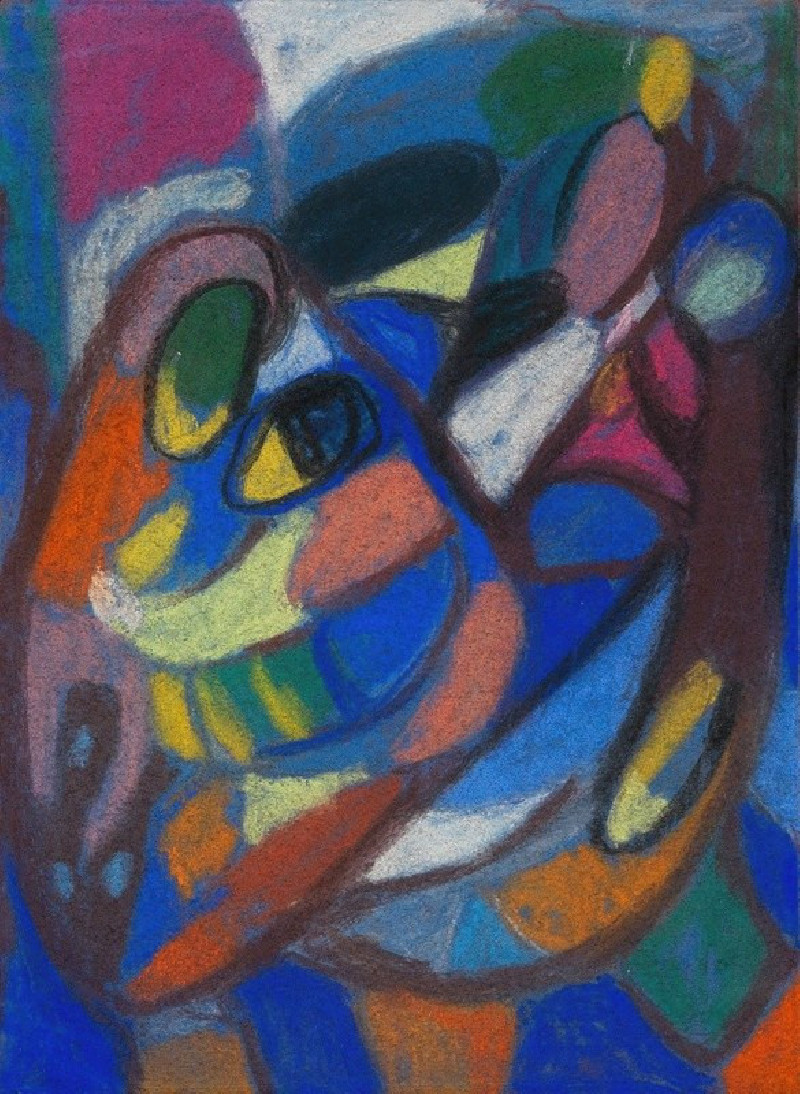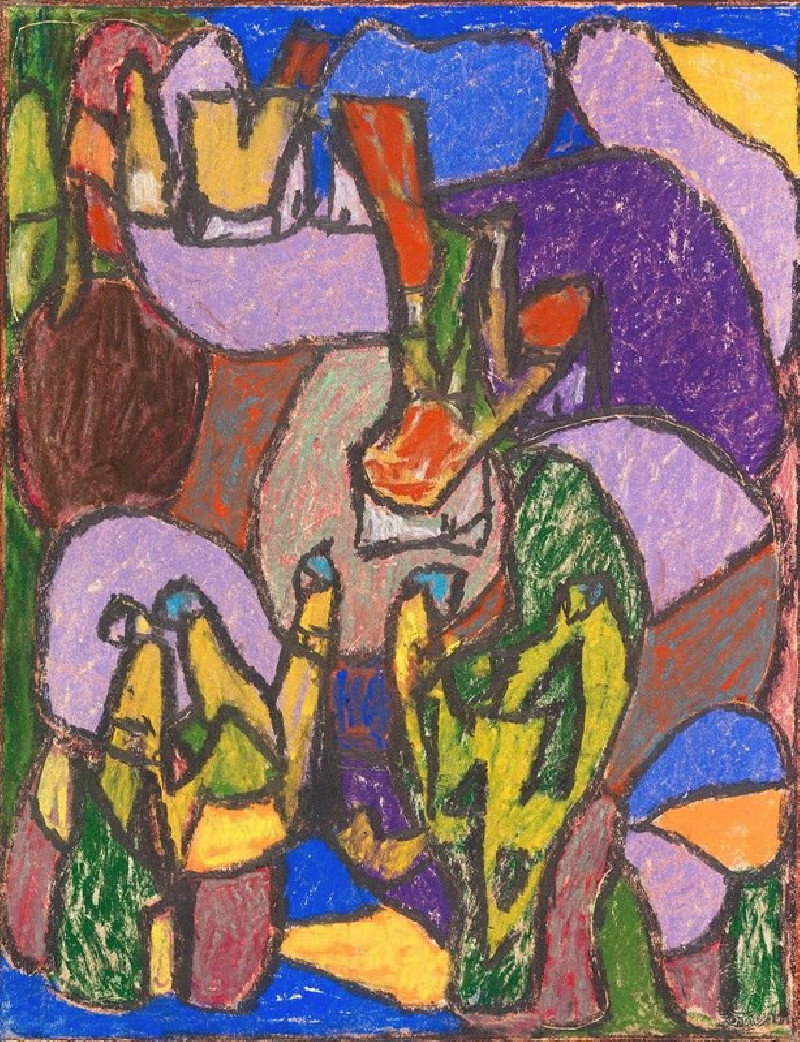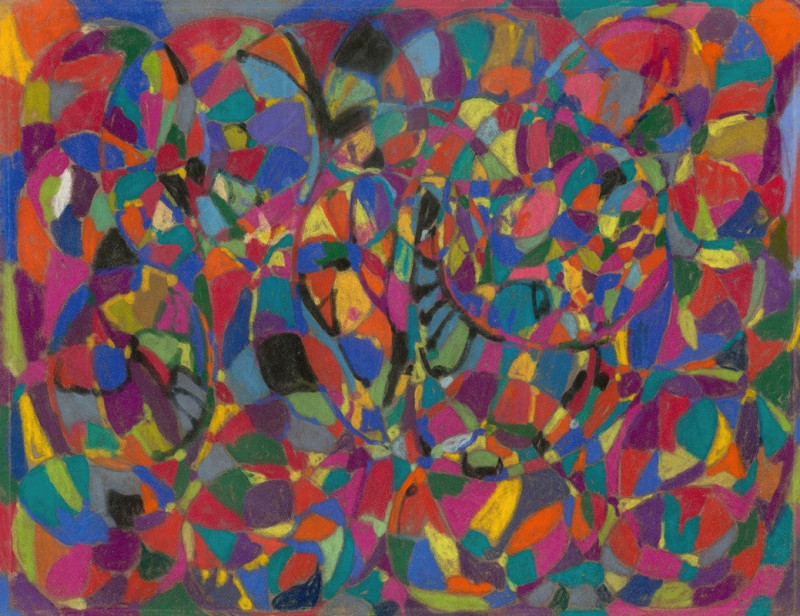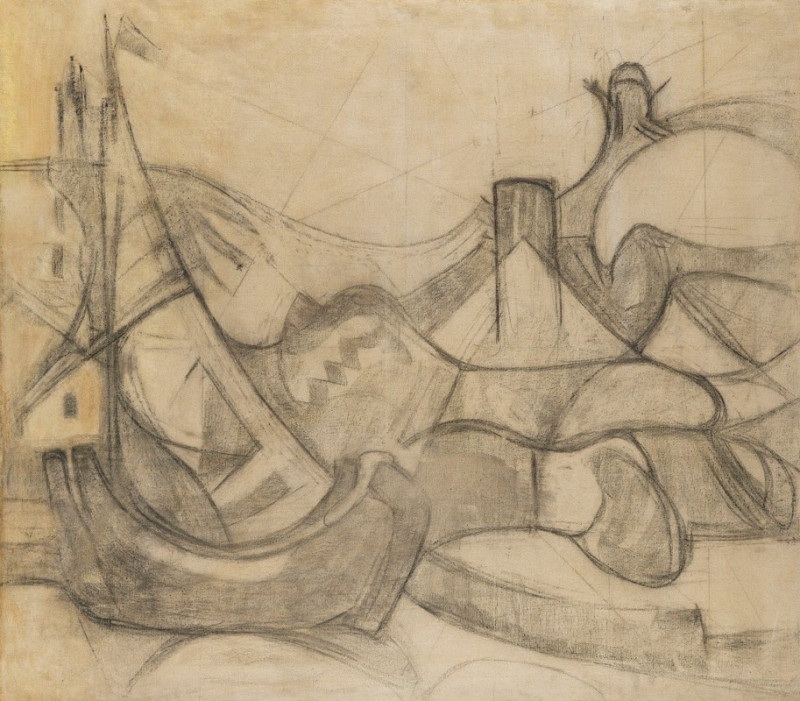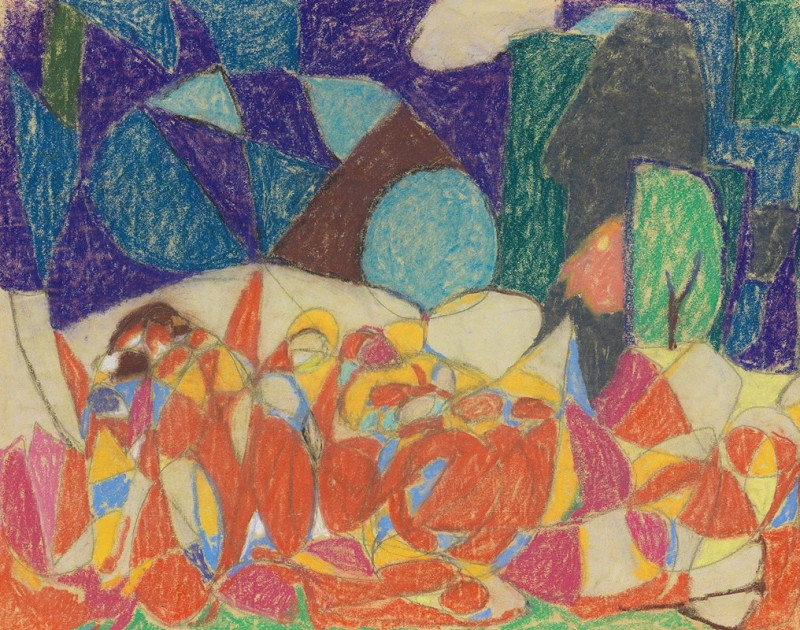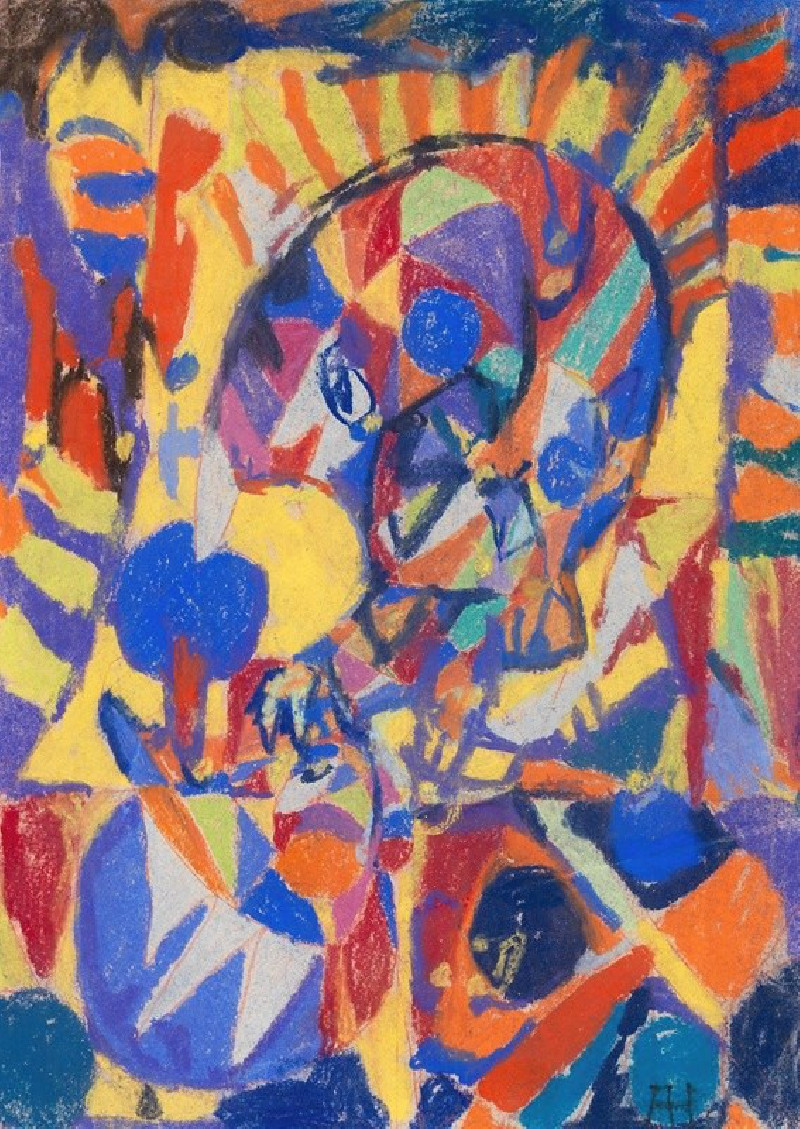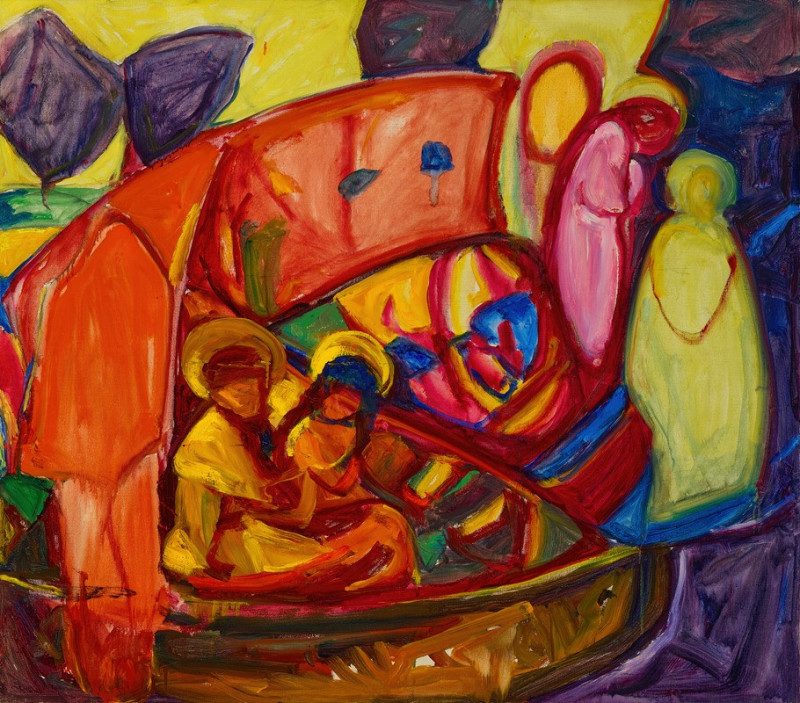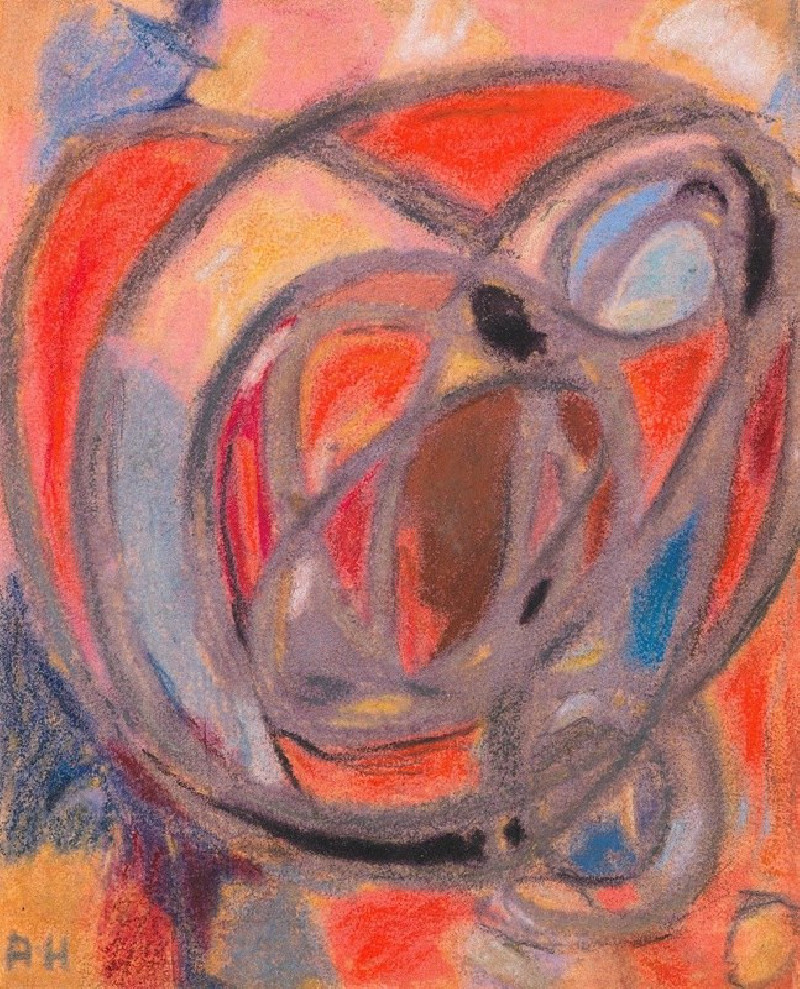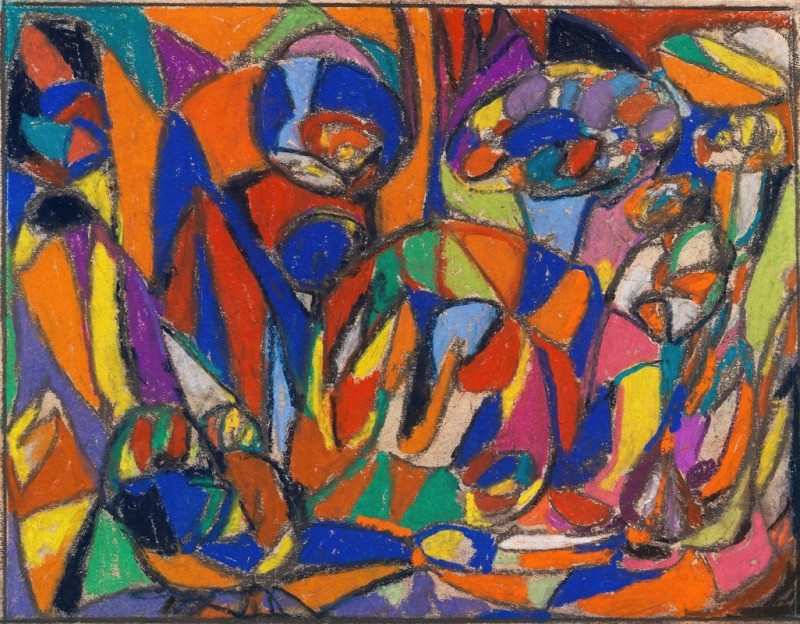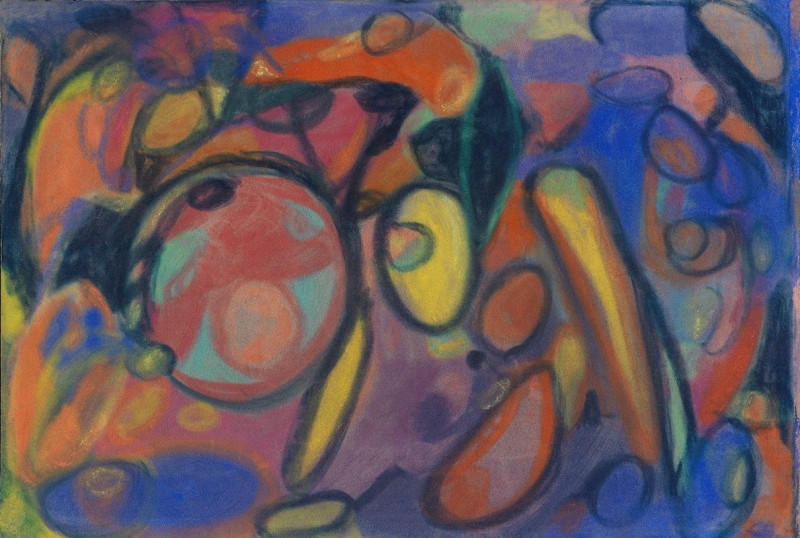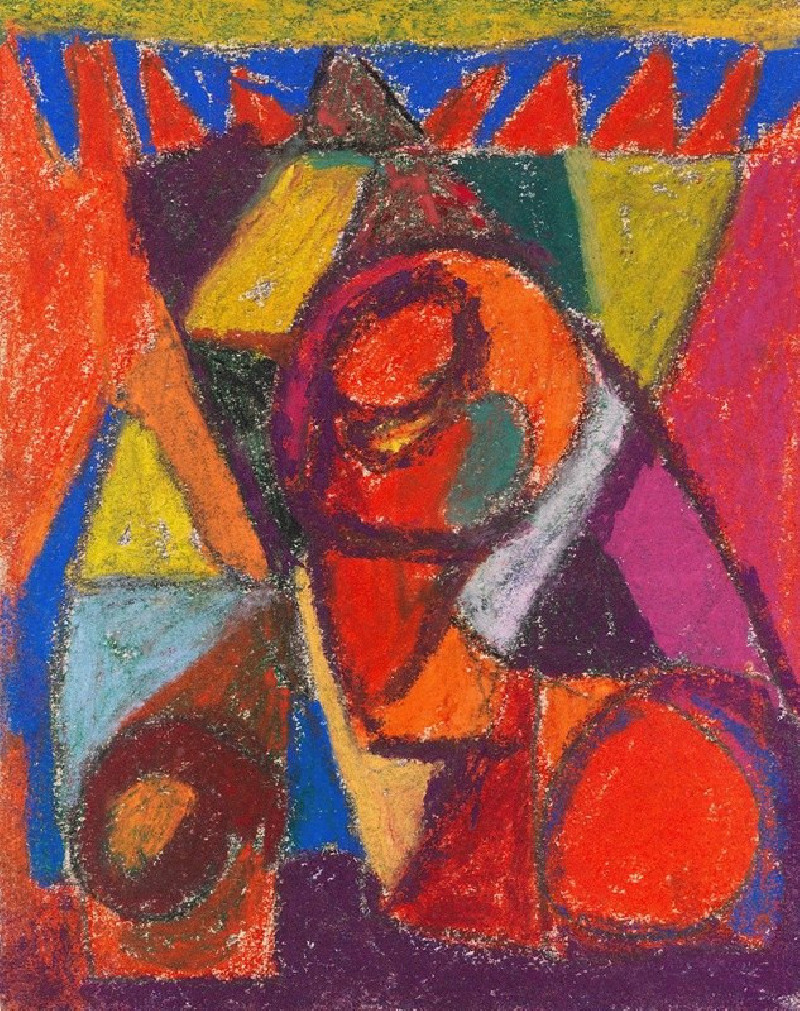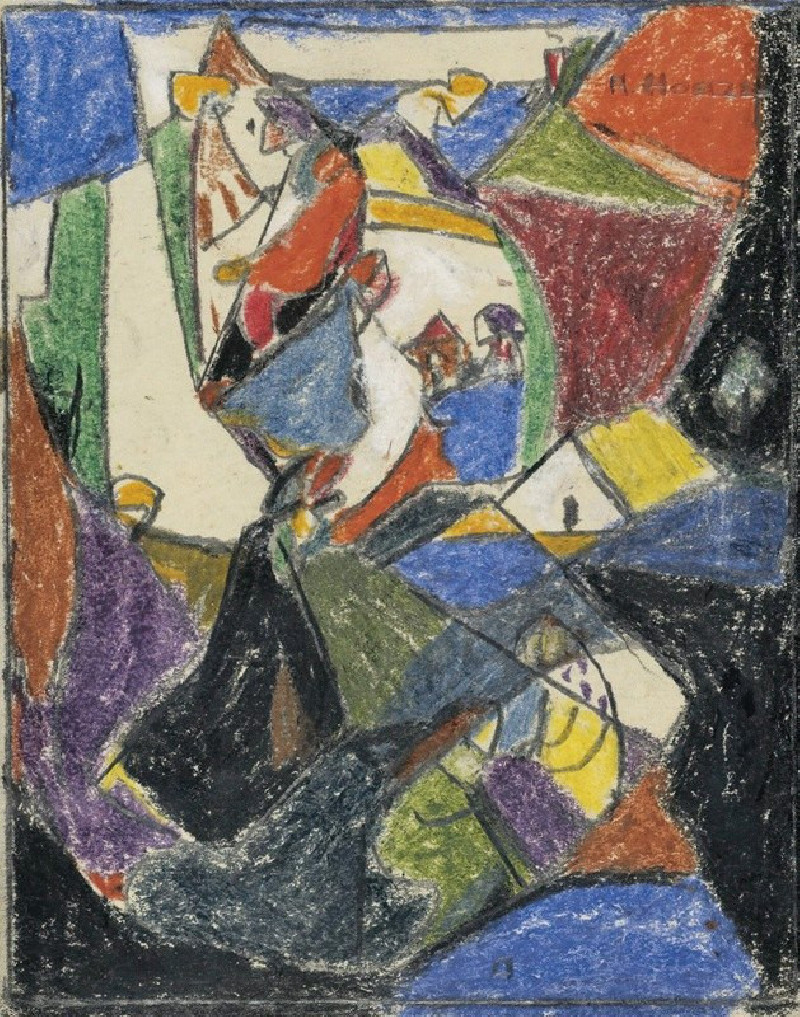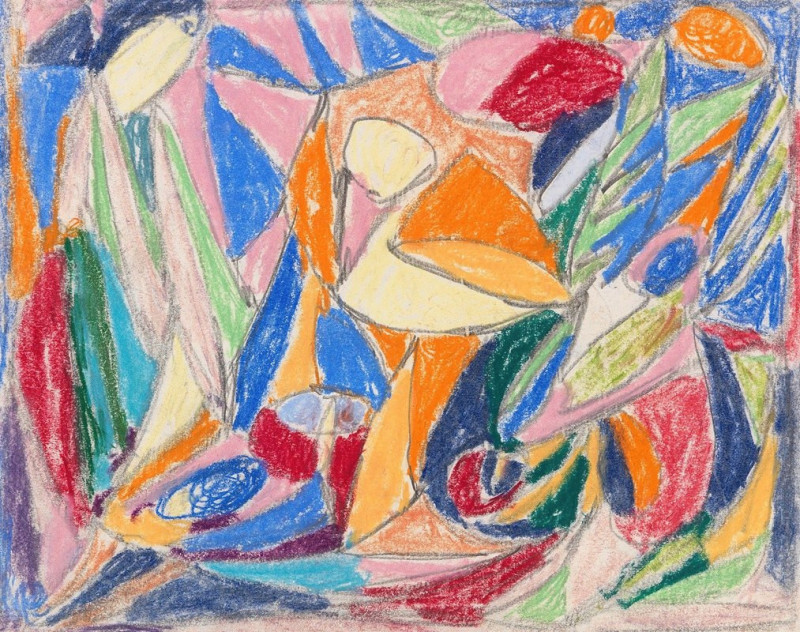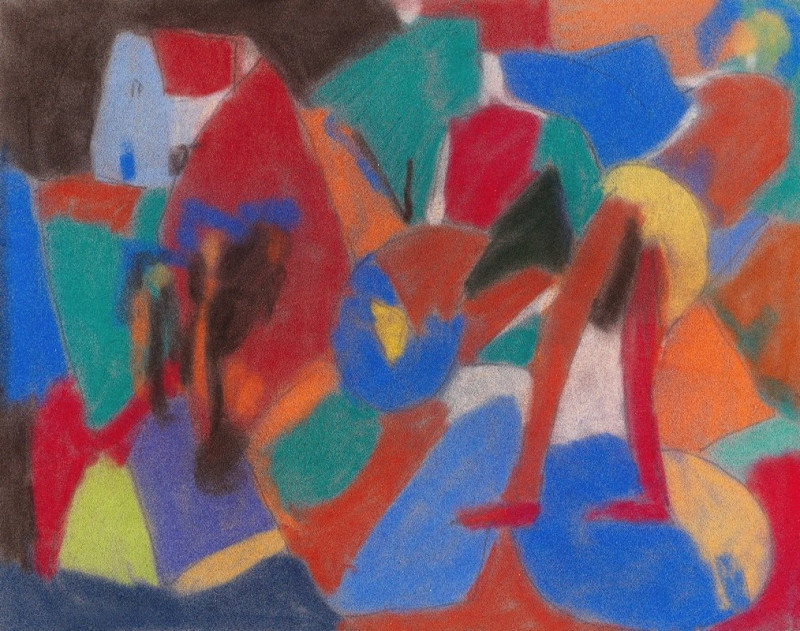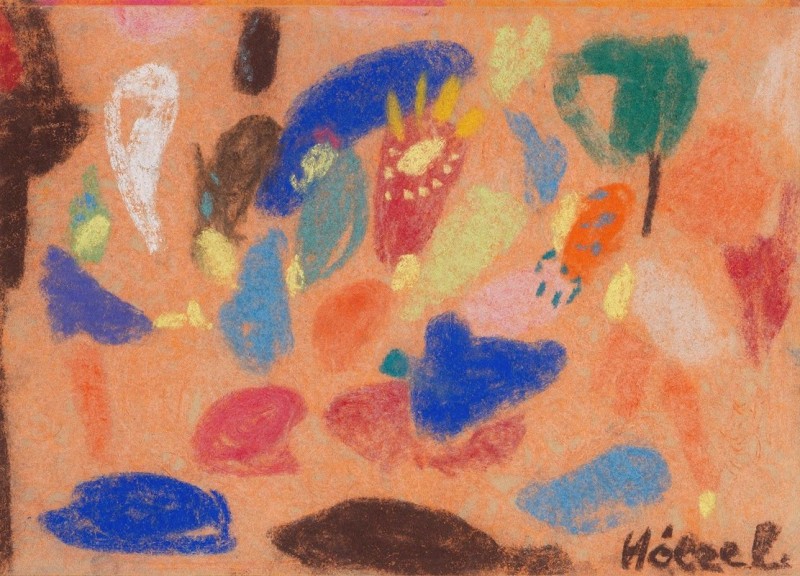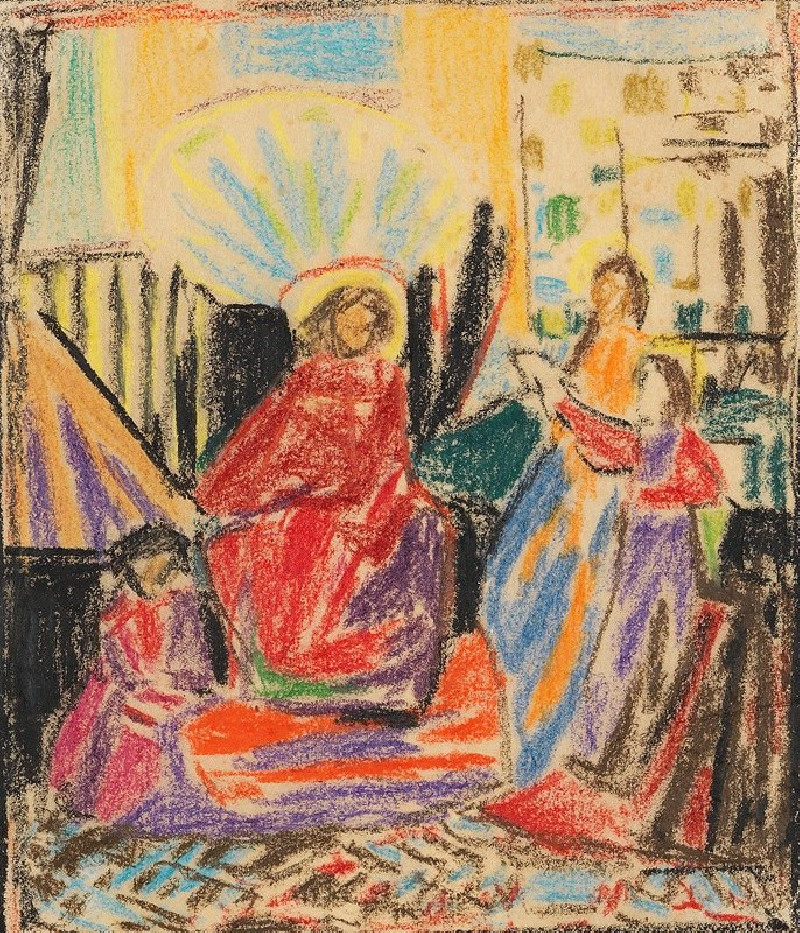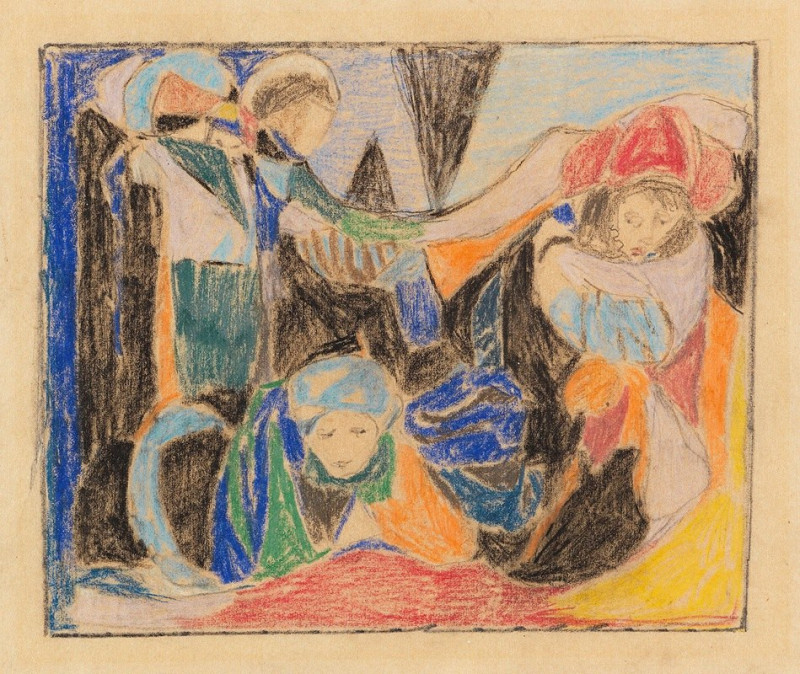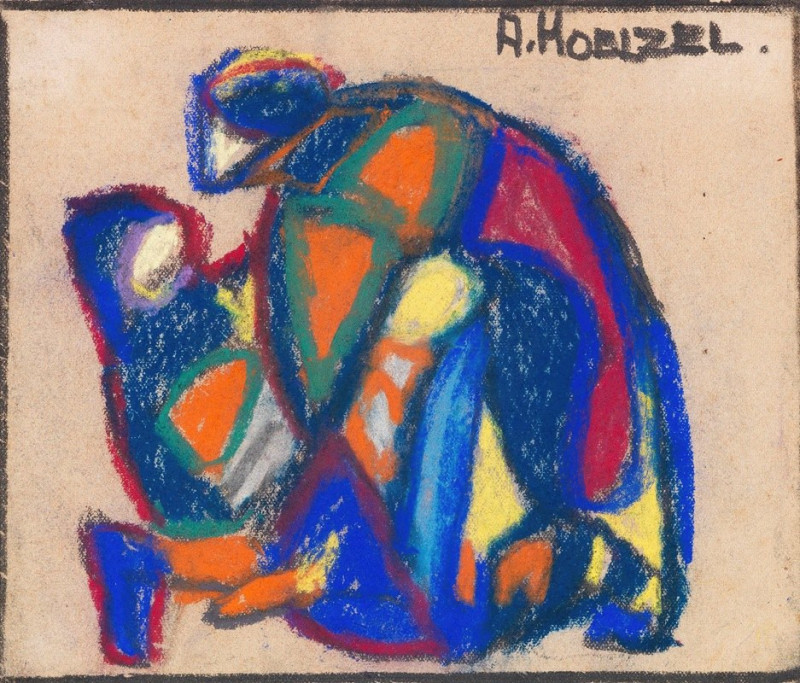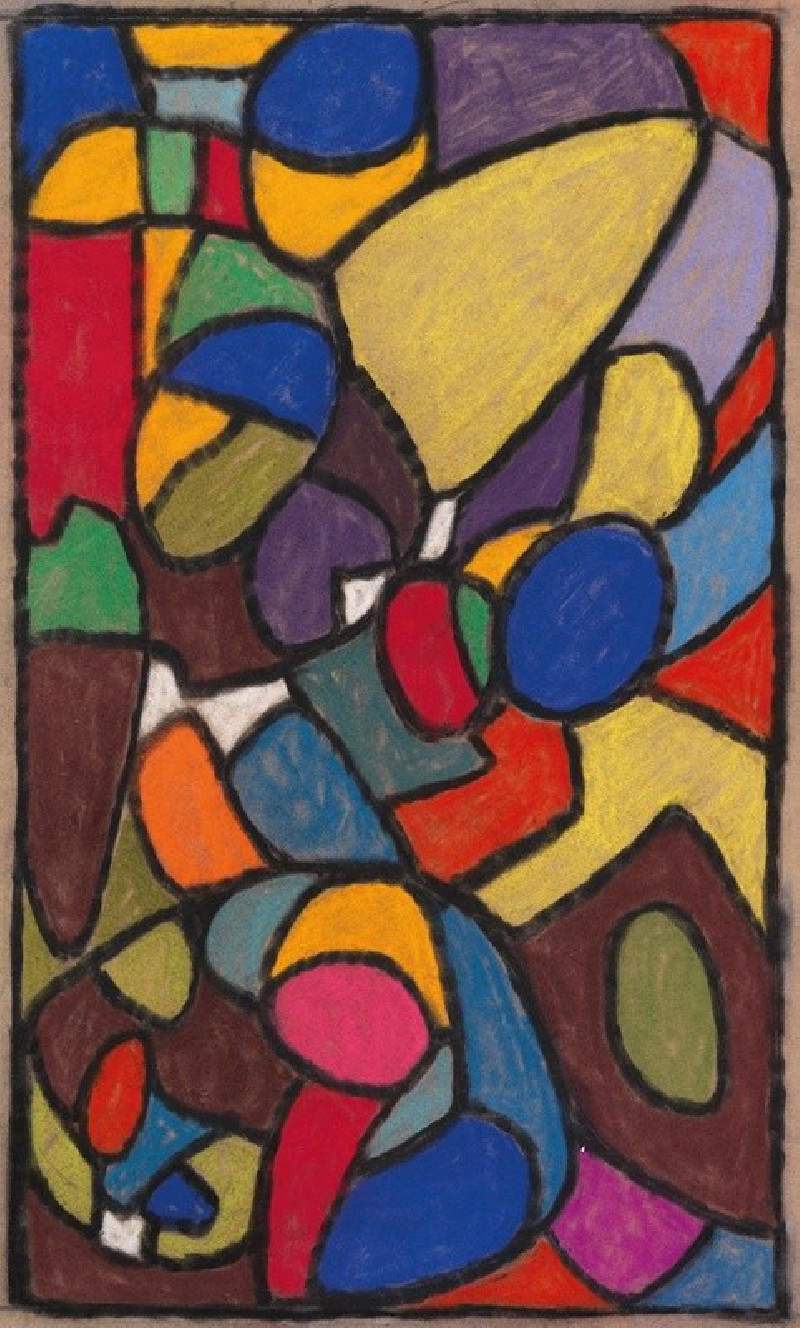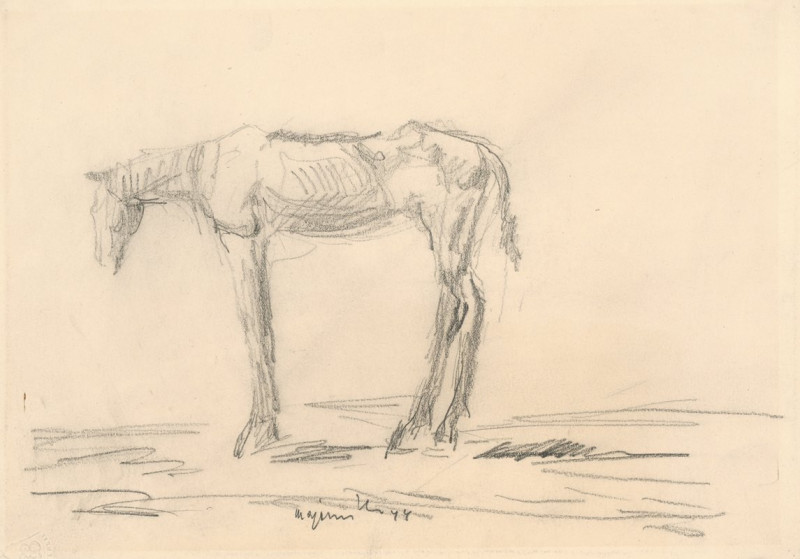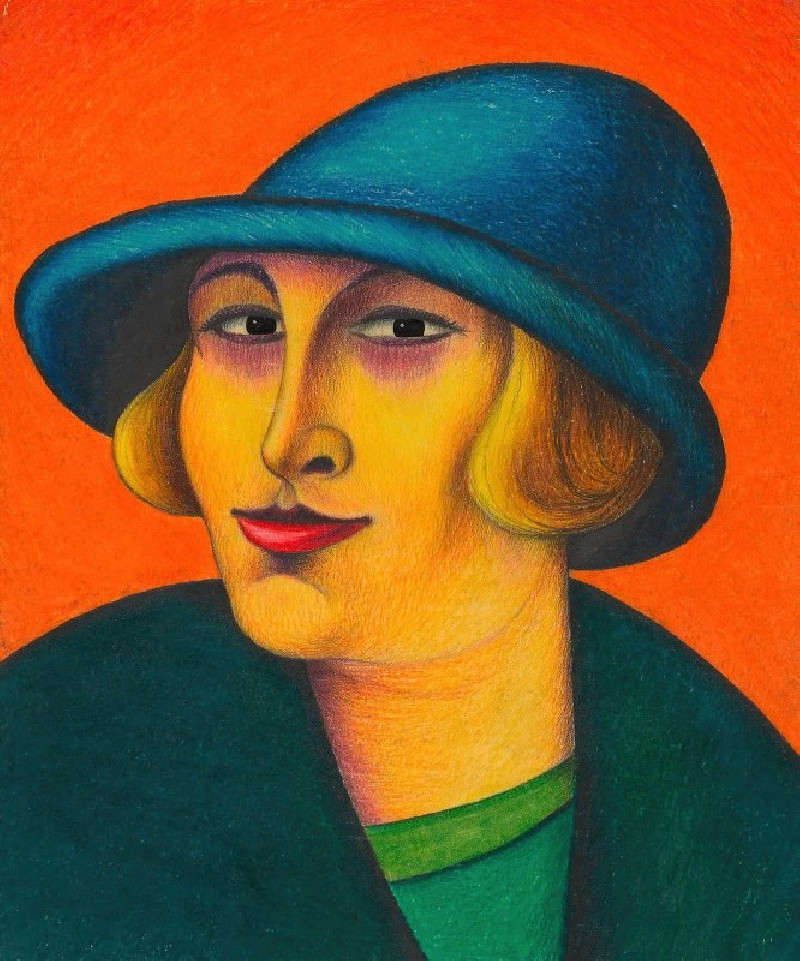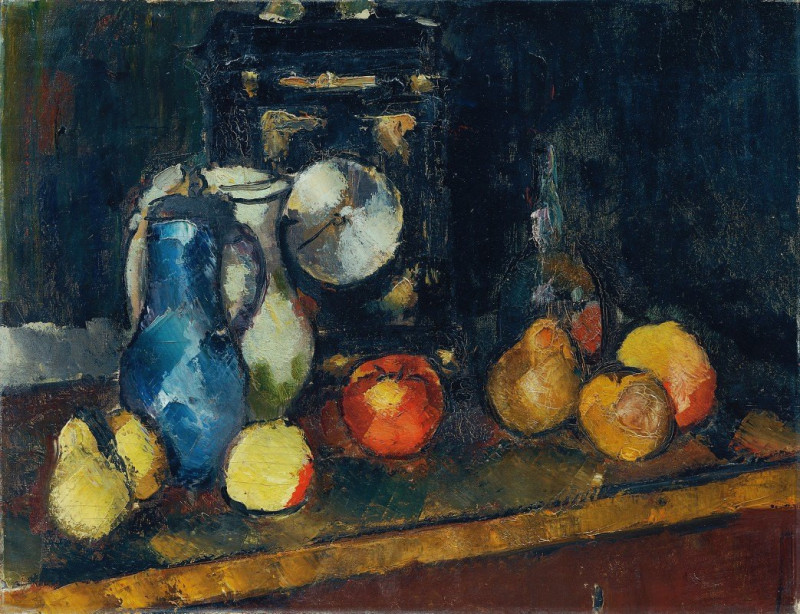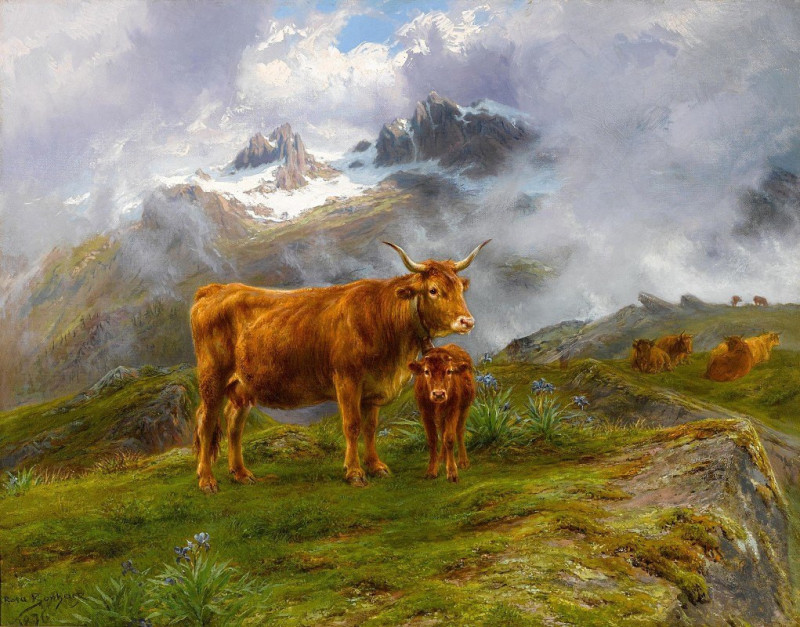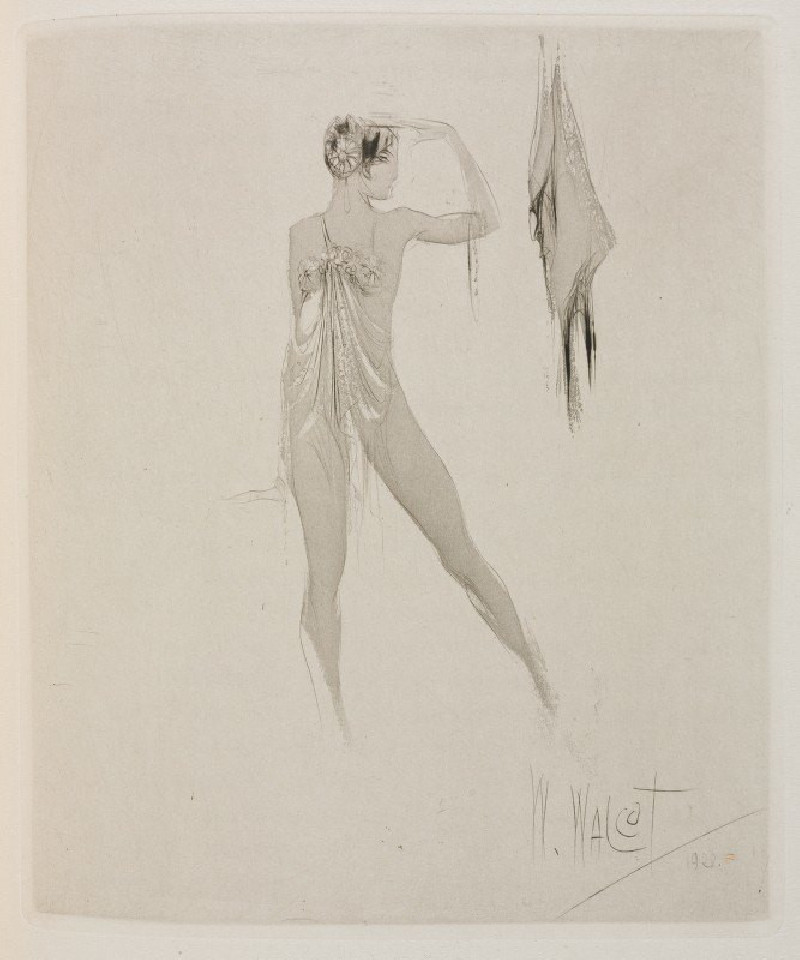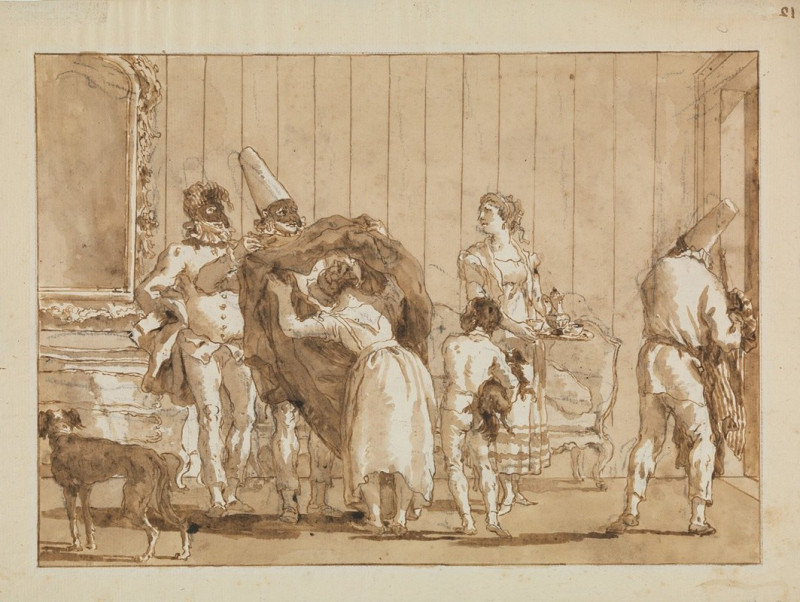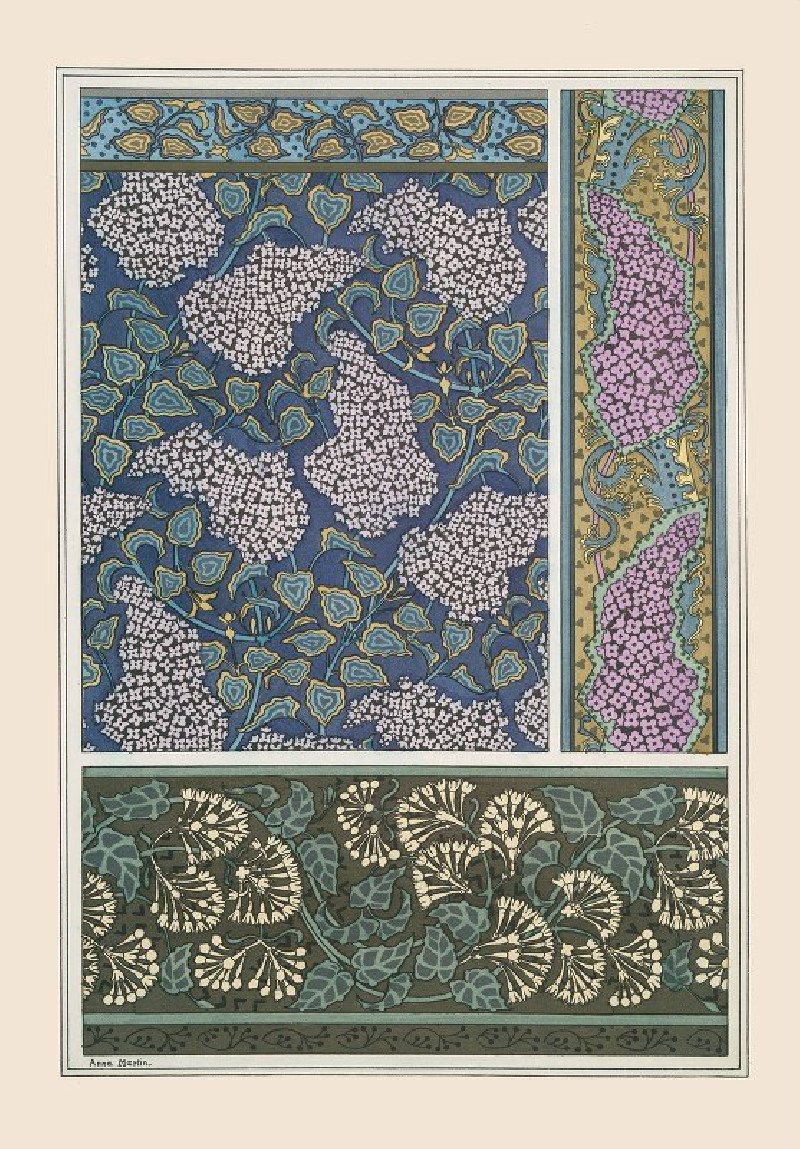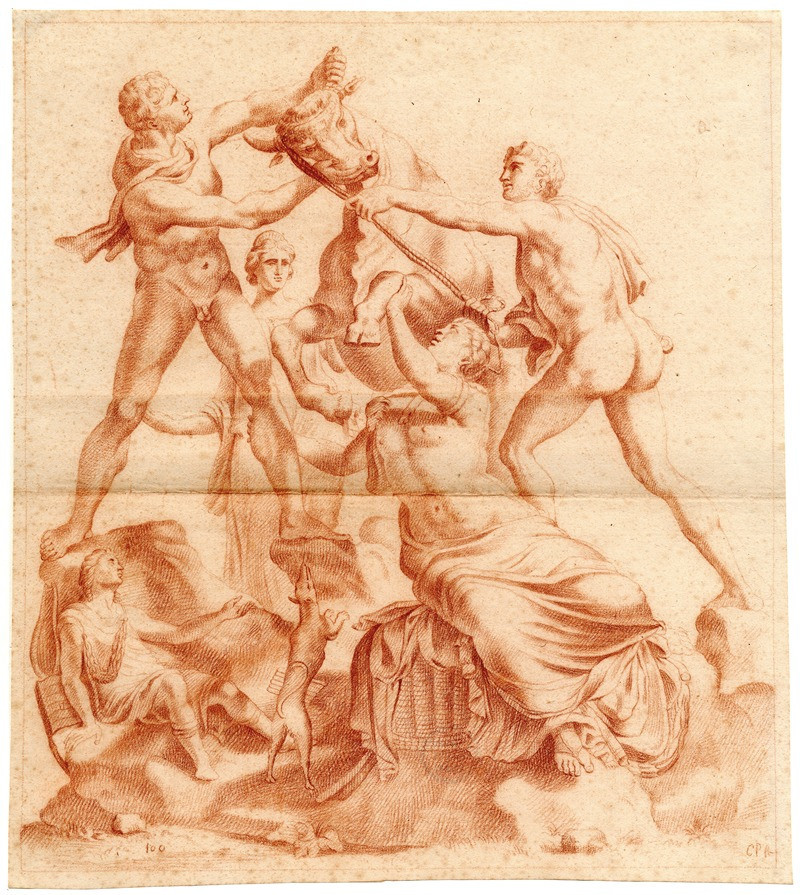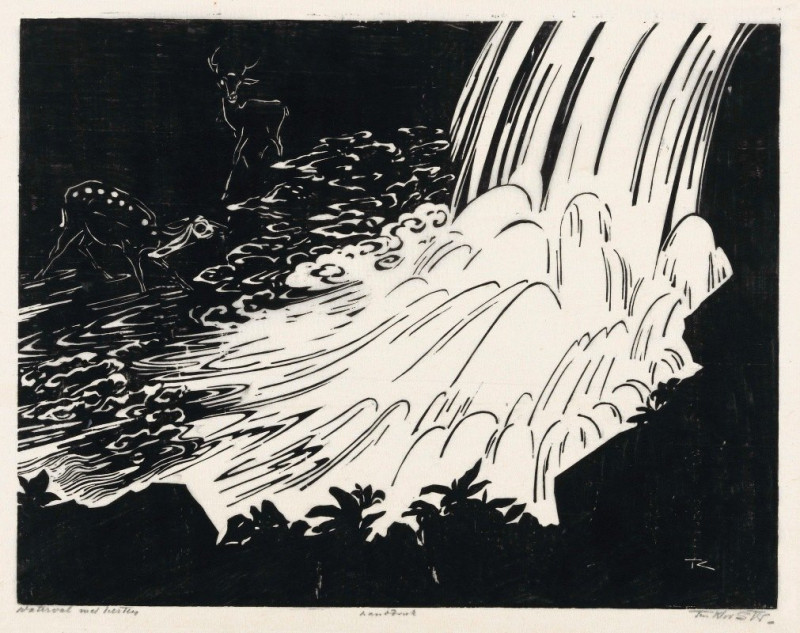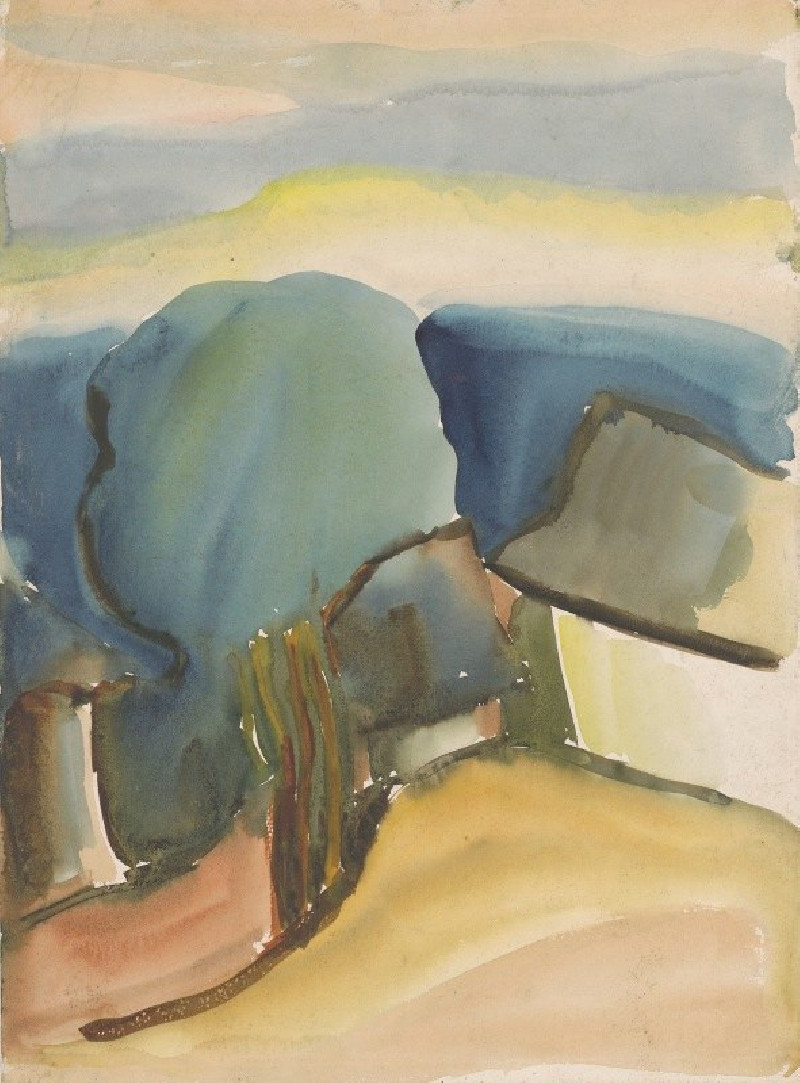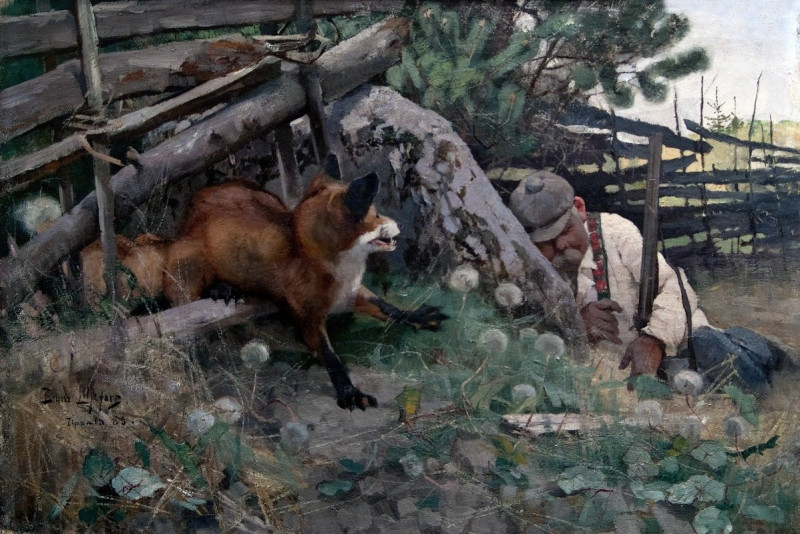Komposition (1930)
Technique: Giclée quality print
Recommended by our customers
More about this artwork
Adolf Hölzel's "Komposition" from 1930 is a vibrant exploration of abstract forms and intense color compositions that pulls viewers into a captivating visual journey. This painting showcases Hölzel's unique approach to abstraction, which was pivotal in the development of modern art in Europe.In "Komposition," we observe a collection of curving forms and dynamic lines. The central circular shape, awash with a bold orange, serves as an anchor amidst a flurry of blues, purples, and contrasting reds. Hölzel's use of color is not just mere representation but a deliberate act to evoke emotion and depth. Each color seems carefully chosen to complement or contrast its neighbors, creating a pulsating effect across the canvas.The movement within the painting is fluid and almost musical, with forms that suggest but do not delineate natural objects. There might be hints of floral elements or geometric figures, but Hölzel leans towards creating an impression rather than a clear depiction. This ambiguity invites viewers to interpret the painting personally, making each encounter with it a unique experience."Komposition" captures the essence of Hölzel's artistic philosophy, which emphasizes the emotional prowess of abstract art. It serves as an excellent example of how colors and shapes can transcend visual perception to touch the realms of the intangible and the felt.


